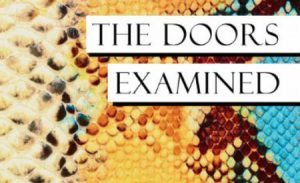
There is currently an exhibit at the Centre Pompidou in Paris that I was fortunate enough to visit last week by Japanese composer and artist Ryoji Ikeda. The installation, called “Continuum” seamlessly blends sound, digital projection, and space into an immersive wonder.
Ikeda’s work with sound is difficult to describe. Some writers have referred to it as “cyberpunk,” with “definitive sci-fi undertones”. It often features explorations of sine tones and frequencies at the limit of what the human ear can perceive. Ikeda has written in the liner notes for his album +/- that “a high frequency sound is used that the listener becomes aware of only upon its disappearance.”
His work is structured yet wildly imaginative, presenting the listener/viewer with an unstable demarcation between the electronic and natural, synthetic and synaptic.
When visitors to the exhibit enter, they are prompted to remove their shoes, and enter a large, open room with industrial black carpet and low ceilings. On one long wall, is a massive digital projection, ever moving, repeating with variation at times attenuate, at others forthright. The visuals and audio are joined but distinct in their character and composition; partnered as a dancer is to their music. The space of the room too is incorporated into the exhibit; the people sitting on the carpet-covered floor and walking in front of the projection cast elongated moving shadows like shadow puppets. The people and the space, always anchored in the present moment, counter the looping of the projection and sound with their assertions of future and past, of history and unfolding.

Ikeda’s immersive digital works are a bold interpretation of human-digital experience. It is not just a digital distillation, but a rendering that encompasses time, space, sight, sound and phyisical sensation.
One leaves the exhibit thinking of the experience of the living-synthetic in ways that are reminiscent of Philip K. Dick, but not as a narrative science fiction story, rather as a temporal impression. As a visitor to Paris and its many museums, one is constantly being reminded of history through art that seldom relinquishes it grasp on the time of its creation. Even in the halls of the modern Centre Pompidou, this sense of reflection and history is observed. Ikeda’s Continuum presents a break from the confines of the past, and suggests that art has an indissoluble future. The digital nature of the work disentangles our understanding of mathematics, big data and algorithmic process in a uniquely artistic language and suggests a future of art that embraces technology as an ally and companion.
Continuum opened at the Centre Pompidou on 15 June, 2018 and will end on 27 August, 2018.




Leave a Reply